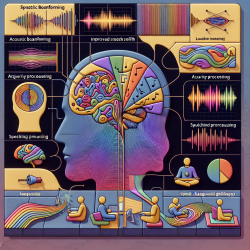Introduction
In today's rapidly advancing digital age, eHealth tools have emerged as a pivotal component in healthcare delivery, particularly for prehabilitation education. As practitioners, understanding the preferences and perspectives of patients and caregivers is crucial in designing effective eHealth modules. A recent qualitative study titled "Patient and Caregiver Perspectives on an eHealth Tool: A Qualitative Investigation of Preferred Formats, Features and Characteristics of a Presurgical eHealth Education Module" provides valuable insights into how these tools can be optimized for better patient outcomes.
Key Findings from the Study
The study involved patients with hip and knee osteoarthritis (OA) and their caregivers, focusing on their preferences regarding the formats, features, and characteristics of eHealth tools. The analysis revealed three main themes:
- "Easier to Understand": Participants expressed a preference for multi-modal delivery formats, including written materials, images, and videos. They emphasized the need for a combination of formats to cater to different learning preferences.
- "What Does That Mean?": There was a strong demand for clear, simple, and relevant information, with an emphasis on providing reasons for specific recommendations. Participants preferred content that could be personalized and customized to their needs.
- "Preparation, Right?": Opinions varied on the timing of access to prehabilitation education. Some participants preferred early access, while others favored receiving information closer to the surgery date.
Implications for Practitioners
For practitioners, these findings underscore the importance of designing eHealth tools that are user-friendly and tailored to the needs of patients and caregivers. Here are some actionable steps practitioners can take:
- Integrate Multi-Modal Formats: Utilize a mix of written content, images, and videos to accommodate diverse learning styles. Ensure that videos and images reflect real-life scenarios to enhance relatability.
- Emphasize Clarity and Simplicity: Use straightforward language and provide clear explanations for medical advice. Include rationale for recommendations to improve understanding and adherence.
- Offer Customization Options: Allow users to personalize their learning experience by selecting content relevant to their condition. This could include saving important sections for future reference.
- Consider Timing Preferences: Provide flexible access to educational materials, allowing patients to engage with the content at their preferred time.
Encouraging Further Research
While this study offers valuable insights, further research is needed to explore the integration of patient and caregiver feedback in the development of eHealth tools. Practitioners are encouraged to conduct their own investigations to tailor eHealth solutions to their specific patient populations.
Conclusion
Incorporating patient and caregiver perspectives into the design of eHealth tools can significantly enhance the effectiveness of prehabilitation education. By adopting a data-driven approach and focusing on user-friendly design, practitioners can improve patient outcomes and satisfaction.
To read the original research paper, please follow this link: Patient and Caregiver Perspectives on an eHealth Tool: A Qualitative Investigation of Preferred Formats, Features and Characteristics of a Presurgical eHealth Education Module.










